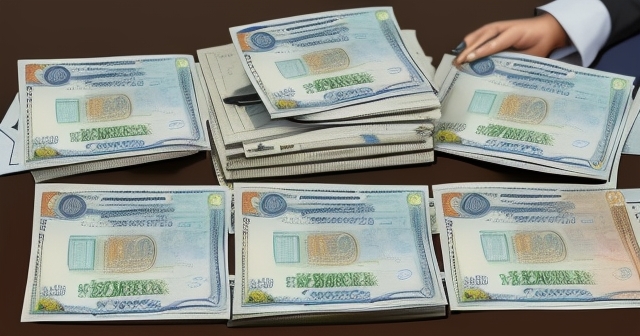“`html
Understanding the Pressures on the Tunisian Dinar: A Comprehensive Look
Welcome, fellow investors and traders, to a deep dive into the factors shaping the value of the Tunisian Dinar (TND). Perhaps you’ve been watching the currency markets closely, or maybe you’re just starting to understand how macroeconomic forces impact exchange rates. Today, we’re going to explore the significant headwinds the Tunisian Dinar faces, trading around 3.17 against the US Dollar recently, with forecasts hinting at further depreciation. This isn’t just about numbers on a screen; currency pressure is often a clear symptom of deeper economic challenges within a nation. We’ll dissect these challenges together, looking at large fiscal deficits, mounting public debt, and a complex relationship with international financial bodies like the IMF, all of which raise substantial concerns about Tunisia’s financial stability. Let’s break down these complex issues step-by-step, like building blocks in understanding market dynamics and their impact on currency, providing valuable insights for both novice investors and experienced traders.
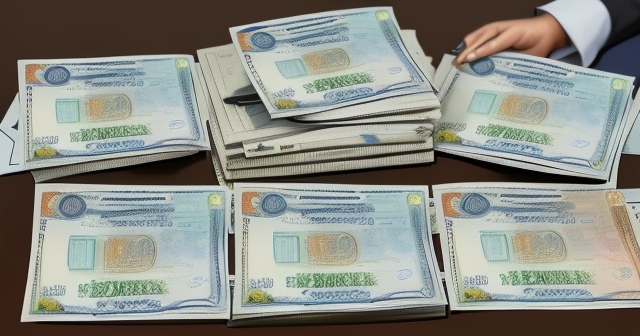
Here are some key factors influencing the Tunisian Dinar:
- Large fiscal deficits affecting economic stability.
- Increasing levels of public debt discouraging investment.
- External pressures from international financial bodies.
The Tunisian Dinar’s Current Standing and Future Forecasts
Let’s start by anchoring our understanding with where the Tunisian Dinar (TND) stands today. As of a recent look (Feb 14), the USDTND spot rate was noted at 3.1724. This value tells us that it took approximately 3.17 Tunisian Dinars to purchase one US Dollar on that date. While this rate saw a slight increase (0.30%) in the US Dollar’s favor recently, indicating minor Dinar depreciation, it’s crucial to look at the bigger historical picture to grasp the currency’s trajectory.
Historically, the USDTND exchange rate has seen considerable movement. It reached an all-time high of 3.82 in June 2024, a significant peak that underscores periods of intense pressure on the TND. What does an increasing USDTND rate signal for the Tunisian Dinar? Simply put, it signifies that the Tunisian Dinar is weakening relative to the US Dollar; it takes more Dinars to acquire the same amount of US Dollars.
Looking ahead, the forecasts suggest continued pressure on the TND. Experts predict the USDTND rate could reach 3.22 by the end of the current quarter and potentially 3.28 in 12 months. These forecasts, if they materialize, point towards an expected further depreciation of the Tunisian Dinar against the US Dollar. Understanding these movements and forecasts is fundamental for any trader or investor interested in emerging market currencies or those tracking Tunisia’s economic health. Recent trading sessions also showed the TND depreciating against other major currencies like GBP, CAD, MXN, INR, BRL, and ARS, while appreciating against EUR, AUD, NZD, JPY, CNY, CHF, RUB, KRW, IDR, CZK, DKK, and HUF, highlighting varied performance across different pairs.
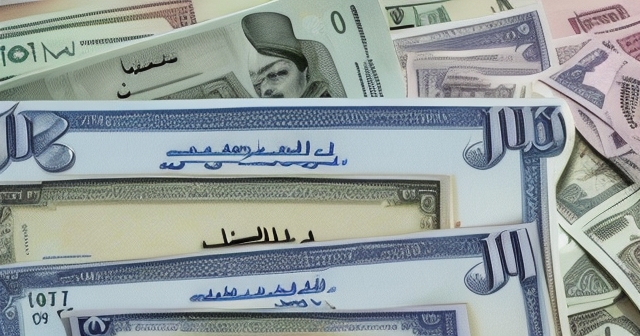
| Currency | Direction | Current Rate |
|---|---|---|
| USD | Depreciating | 3.17 TND |
| EUR | Appreciating | Current Rate TBD |
| GBP | Depreciating | Current Rate TBD |
Examining Key Macroeconomic Indicators: Inflationary Pressures
To understand the Tunisian Dinar‘s value and its trajectory, we must first grasp the underlying health and stability of the Tunisian economy. One of the most persistent and challenging issues facing Tunisia is high inflation. In 2023, the estimated average inflation rate hovered alarmingly high at around 9.3%, with a 9.4% average reported by one source. This built upon an already elevated 8.3% recorded in 2022. These figures highlight a sustained period where the purchasing power of the Tunisian Dinar has been significantly eroded.
While forecasts suggest a potential drop to 6.0% by January 2025, the current price pressures continue to weigh heavily on households and businesses, reducing real wages and impacting household consumption. High and unpredictable inflation makes economic planning difficult and can deter both domestic and foreign investment. For currency traders, high inflation is often a bearish signal, as it can lead the central bank to hike rates, potentially slowing growth, or conversely, if unchecked, lead to currency devaluation as confidence wanes.
In response to this persistent inflation, the Central Bank of Tunisia (BCT) has utilized its primary monetary policy tool: the interest rate. The policy rate has been held at a relatively high level, estimated at 8.00% as of February 2025 data. The BCT has historically taken significant steps to combat rising prices, including substantial rate hikes, such as increasing the rate by 100 basis points in February 2019 and again in June 2018. These actions demonstrate a commitment to taming rising prices and anchoring inflation expectations. However, as we will explore, the drivers of inflation in Tunisia are complex and not solely responsive to monetary tightening.
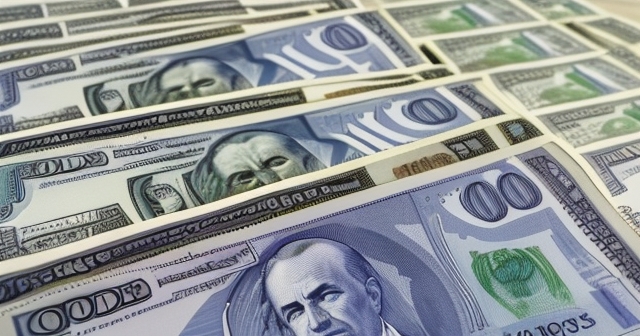
Economic Stagnation and Persistent Unemployment Challenges
Beyond inflation, Tunisia‘s economy has struggled with sluggish economic growth, hindering its ability to improve living standards and create sufficient jobs. The estimated GDP growth for 2023 was a mere 0.70%. This marked a sharp decline from 2.50% in 2022 and represented the lowest growth rate recorded since the pandemic-hit year of 2020, illustrating a significant economic slowdown.
What were the primary factors contributing to this lack of robust economic growth? The slowdown was largely driven by declines in crucial sectors of the economy, including agriculture, industry, and construction. The manufacturing sector also experienced stagnation. This lack of dynamism across key productive sectors makes it harder for the economy to generate wealth, stimulate demand, and absorb its workforce. Unlike previous periods, external factors such as buoyant exports (driven by EU growth and high olive oil/phosphate prices), positive tourism numbers, and strong remittances were not the cause of the 2023 slowdown; the recession was primarily domestically driven.
Adding to the economic strain is a persistently high unemployment rate, a critical social and economic challenge. Estimated at 15.8% in 2023 (a slight increase from 15.5% in 2022), this national figure masks even more concerning trends among specific demographics. Youth unemployment stood at an alarmingly high 39.1% in 2023, while unemployment among college graduates reached 23.8%. A significant portion of the skilled and young workforce unable to find productive employment represents a major drag on productivity, potential growth, and is a significant source of social frustration and instability. Forecasts for September 2024 still place the overall rate around 16.0%, indicating no immediate relief is expected.
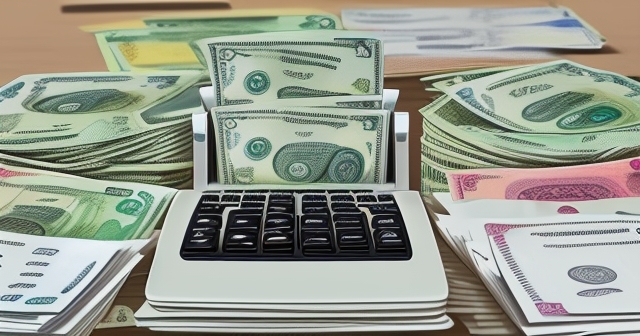
The Critical Challenge of Low Investment and Savings Rates
For any economy to achieve sustainable growth, increase productivity, and create meaningful employment opportunities, it requires robust investment. Unfortunately, Tunisia faces a critical challenge in this area, which significantly constrains its future potential. National investment levels hit a record low of just 12.8% of GDP in 2023. To put this figure into perspective, healthy developing economies often see investment rates much higher, frequently exceeding 20% or even 30% of GDP. A low investment rate signals a lack of confidence, limited capital availability, or insufficient incentives for businesses to expand and modernize.
Coupled with this low investment rate is a low national savings rate, recorded at 7.0% of GDP in 2023. Low savings mean there is less domestic capital available to fund investment, increasing reliance on potentially volatile foreign capital. This combination indicates a fundamental structural weakness in the economy’s ability to fund its own future development. Low investment translates directly into less capacity expansion, delayed adoption of new technologies, reduced innovation, and ultimately, limited potential for job creation and income growth. These internal weaknesses are precisely the primary drivers behind the poor 2023 growth figures, underscoring the urgency of addressing the factors hindering investment and savings.

Unsustainable Fiscal Deficits and the Burden of Public Debt
Perhaps the most significant and immediate source of pressure on the Tunisian Dinar and the wider economy stems from the state of the government’s finances. Tunisia has been running large and persistent fiscal deficits for years. In 2023, the deficit was estimated at a substantial 7.7% of GDP. This is not an isolated figure but a level consistent with those seen in 2021 and 2022, highlighting a structural imbalance in government spending and revenue. These deficits have increased significantly since the 2010-2011 uprising, marking a period of expanded public expenditure without commensurate revenue growth.
What drives these large deficits? Primarily, expansive fiscal policies have been in place, including a substantial public sector wage bill – which consumes a large portion of the budget – and costly social expenditures and subsidies designed to cushion the population from economic hardship. While politically challenging to reform, these expenditures place an enormous burden on the national budget. These persistent deficits are not just abstract numbers; they lead directly to an accumulation of public debt. Tunisia‘s total public debt, which includes state-guaranteed debt (debt taken on by public enterprises but guaranteed by the state), is now alarmingly close to 100% of GDP. This level is widely considered unsustainable by international standards.
High debt levels have severe consequences. A larger and larger portion of the government’s revenue must be allocated purely to debt servicing – paying interest and principal on borrowed funds. This leaves significantly less fiscal space for essential public services, crucial investment in infrastructure or human capital, or counter-cyclical stimulus during economic downturns. It also makes the country highly vulnerable to changes in global interest rates and shifts in investor sentiment. Servicing this debt, much of which is external, requires access to foreign currency, adding direct pressure on foreign exchange reserves and the Tunisian Dinar itself.
Financing Challenges and Growing Reliance on Domestic Sources
Funding these large and persistent fiscal deficits in the face of unsustainable public debt levels is a major challenge for the Tunisian government. Tunisia faces a significant foreign funding gap, meaning it requires external financing to meet its budget needs and debt obligations. This gap is proving increasingly difficult to close, particularly without the crucial support and financing package typically provided by international financial institutions like the IMF (International Monetary Fund). The lack of an agreement with the IMF has effectively shut off significant sources of affordable external financing.
When external financing avenues are constrained, the government must increasingly rely on domestic sources to fund its spending and debt rollover needs. This primarily means borrowing heavily from local banks and financial institutions within Tunisia. While this might seem like a viable alternative, it has a detrimental and well-documented effect on the private sector, known as ‘crowding out’. Essentially, the government’s need for funds is so large that it absorbs a significant, often disproportionate, share of the available capital and liquidity within the country’s banking system.
This increased reliance on domestic borrowing leaves less capital available for private businesses to borrow, making credit harder to access and significantly more expensive. This ‘crowding out’ effect directly stifles private sector investment, development, and expansion, contributing to the low investment rates we discussed earlier and hindering overall economic growth and job creation. It represents a structural impediment to the kind of private-sector led growth Tunisia desperately needs.
The Dangerous Path of Direct Monetary Financing
Adding another layer of significant risk to Tunisia‘s complex financing challenges is the recent shift towards direct monetary financing. Since February 2024, there have been reports of increasing reliance on the Central Bank of Tunisia (BCT) directly financing the government’s budget deficit. What does this mean in practical terms? Instead of the government borrowing funds from commercial banks, issuing bonds to domestic or international markets, or receiving external aid, it essentially obtains funds directly from the Central Bank. This can involve the bank purchasing government debt directly or extending credit, often without a corresponding increase in the central bank’s assets beyond the government’s promise to pay.
This approach is widely considered highly risky by economists globally and is often associated with economies facing severe fiscal distress. Many experts and financial analysts view direct monetary financing as a key driver of current high inflation in Tunisia, according to some sources. Injecting money into the economy this way, without an equivalent increase in the production of goods and services, fundamentally increases the money supply relative to economic output. This excess liquidity floods the system with currency, leading to higher prices as more money chases the same amount of goods – the classic definition of inflation driven by monetary factors.
Furthermore, direct monetary financing puts immense pressure on the country’s foreign exchange reserves. If people lose confidence in the Tunisian Dinar due to rapidly rising inflation or concerns about the Central Bank’s independence, they will inevitably try to exchange their Dinars for stable foreign currencies like the US Dollar or Euro. This increased demand for foreign currency forces the Central Bank to sell its reserves to maintain the exchange rate, leading to a rapid depletion of these critical buffers. Depleting reserves increases the risk of a sharp and uncontrolled devaluation of the Tunisian Dinar, further fueling inflation through higher import costs and potentially triggering a full-blown financial crisis. This dangerous path has been sternly warned against by the Central Bank Governor himself, highlighting the severity of the potential consequences.
Challenges to Central Bank Independence
Navigating these severe economic storms requires strong, credible, and independent institutions, especially the nation’s central bank. However, the Central Bank of Tunisia (BCT) has faced significant political pressure in recent times. Notably, there have been reported attempts from the presidency under President Kais Saied to erode the central bank’s independence and pressure it into directly financing the budget – precisely the risky monetary financing behaviour we just discussed. This interference undermines the BCT’s autonomy and its ability to conduct sound monetary policy aimed at maintaining price stability and overall financial system stability based on economic fundamentals rather than short-term political expediency.
The stakes involved in maintaining central bank independence are incredibly high. The Central Bank Governor, Marouane Abassi, has publicly issued stark warnings against the dangers of direct monetary financing and has repeatedly stressed the urgent necessity of securing an IMF deal. He has used strong and evocative language, including terms like an ‘explosion’ and drawing parallels to the ‘Venezuelan scenario’ (referencing the severe hyperinflation and economic collapse experienced in Venezuela), to describe the potential catastrophic consequences if the country continues down this path without the necessary structural reforms and external support that an IMF program would typically entail.
The preservation of the Central Bank‘s independence is seen by many domestic and international analysts as crucial for avoiding a complete financial crisis and potential economic collapse. An independent central bank is better positioned to make difficult but necessary decisions regarding interest rates, reserve management, and financial sector oversight, free from political interference. This independence allows policy decisions to be guided by long-term economic prudence and stability requirements, rather than the immediate fiscal needs or political demands of the government.
| Key Economic Challenges | Impact | Potential Solutions |
|---|---|---|
| High Inflation | Eroding purchasing power | Increase interest rates |
| Public Debt | Budget constraints | Reform fiscal policies |
| Unemployment | Social instability | Encourage investments |
The Central Bank’s Policy Response and Limitations
Despite the significant fiscal and political pressures it faces, the Central Bank of Tunisia (BCT) continues to operate within this incredibly difficult environment, attempting to utilize its available tools effectively. As we mentioned earlier, the BCT has maintained a relatively high policy rate of 8.00% as part of its efforts to combat persistent and high inflation. Raising interest rates is the conventional monetary policy tool used to cool down an overheating economy by making borrowing more expensive, which in turn should reduce aggregate demand and theoretically lead to a slowdown in price increases.
However, the effectiveness of conventional monetary policy, such as setting the interest rate, is significantly constrained when the primary drivers of inflation are not excess demand but rather structural fiscal issues (like large deficits and public debt) and, crucially, the controversial shift towards direct monetary financing of the government. In such a scenario, simply raising interest rates may not be sufficient to tame inflation fueled by an expanding money supply or import costs driven by currency depreciation, while simultaneously potentially harming the already struggling private sector by increasing borrowing costs.
The BCT also engages in international cooperation, such as a previous cross-border CBDC (Central Bank Digital Currency) transfer initiative with the Banque de France in July 2021 and other cooperation agreements, indicating efforts to modernize and maintain relationships within the global financial system. Nevertheless, the core challenge remains: how can the Central Bank effectively maintain currency stability, control inflation, and ensure financial stability when fiscal policy is operating unsustainably, the government requires financing it cannot secure externally, and the bank’s own independence is under threat? Preserving foreign exchange reserves is also key amidst these challenges, as past reports indicated reserves falling to worrying levels (e.g., sufficient for only 71 days of imports previously), further limiting the BCT’s capacity to defend the Tunisian Dinar.
Important Considerations: Tunisian Dinar Currency Restrictions
For anyone looking to transact directly with the Tunisian Dinar (TND), whether for travel, business, or simply understanding the practical aspects of the currency, it is absolutely vital to be aware of Tunisia‘s relatively strict currency restrictions. These regulations are implemented by the Central Bank of Tunisia and government authorities to control capital flows and help manage the country’s foreign exchange position.
Understanding these rules is crucial to avoid potential legal issues or financial inconvenience:
- First and foremost, and this is a key point, the import and export of Tunisian Dinar (TND) currency are prohibited. You cannot legally bring physical Tunisian Dinars into Tunisia when you arrive, nor can you take physical Dinars out of the country when you leave. Any Dinar cash found upon entry or exit may be subject to confiscation.
- If you are entering Tunisia with cash, whether it’s USD, EUR, or any other foreign currency, exceeding the equivalent of TND 10,000, you are legally required to make a formal declaration to customs officials upon arrival. It is essential to obtain and keep a copy of this declaration form. Failing to declare amounts over the limit can lead to the confiscation of the entire amount.
- When exiting Tunisia, you are allowed to export foreign currency equivalent up to TND 5,000. However, this is generally permitted *only if* you declared an amount exceeding TND 10,000 upon your entry into the country. The declaration form from your arrival serves as proof of the foreign currency you brought in. You cannot export more foreign currency than you declared upon entry (subject to the TND 5,000 export limit).
- For Tunisian Dinars that you acquired *within* Tunisia by exchanging foreign currency (e.g., at a bank or authorized exchange bureau), you may be able to re-exchange up to TND 3,000 back into foreign currency upon departure. This is typically done at exchange counters at the airport. However, you will almost certainly need to present the original exchange receipt showing that you converted the foreign currency into TND within the country.
The Looming Threat of a Financial Crisis
When you connect the dots we’ve discussed – the large and persistent fiscal deficits, the unsustainable levels of public debt nearing 100% of GDP, the prolonged period of low economic growth, the high rates of unemployment (especially among the youth and educated), the critical lack of investment, the growing reliance on risky financing methods like direct monetary financing, and the political pressure on the independence of the Central Bank of Tunisia – you see that all the necessary elements are in place for a significant and potentially severe financial crisis in Tunisia. This is not a distant academic possibility; it represents a tangible and increasing risk that could affect multiple parts of the country’s financial system simultaneously.
A crisis could manifest in several interconnected ways: there is a significant sovereign default risk on the government’s public debt, meaning the state could struggle or fail to meet its payment obligations to creditors. Concurrently, the pressures we’ve detailed could lead to a sharp and uncontrolled devaluation of the Tunisian Dinar in the foreign exchange market. Such a sudden drop in currency value would make imports much more expensive, further fueling inflation. Furthermore, the domestic banking sector, which is heavily exposed to government debt (due to extensive domestic borrowing), faces significant instability risk if the government struggles to pay its debts.
The reliance on domestic borrowing is already ‘crowding out’ the private sector, starving businesses of essential capital and hindering their ability to drive economic activity. Direct monetary financing by the Central Bank, if continued, risks not only runaway inflation but also triggering a rapid depletion of foreign exchange reserves as people flee the weakening Dinar, accelerating the pace of devaluation and increasing the likelihood of a crisis. The potential consequences of such a crisis are severe and far-reaching: they could include state bankruptcy, a deep and prolonged economic collapse, and significant social challenges resulting from widespread job losses, further reduced incomes, and the state’s inability to fund essential public services and social programs. These risks are significantly heightened by the current stalemate regarding a crucial agreement with the IMF, which would typically unlock external financing and necessitate structural reforms, and the reported opposition from President Kais Saied to implementing these necessary reforms. A ‘soft landing’ for the Tunisian economy seems increasingly improbable without determined policy action, significant reforms, and potentially critical external support.
Navigating Volatility: What This Means for Traders
For experienced traders and those developing their skills, situations like the one unfolding in Tunisia, with significant economic instability, potential for currency depreciation or devaluation, and fiscal challenges, often represent periods of heightened volatility. While increased volatility undoubtedly means increased risk, it also presents potential trading opportunities for those who possess the knowledge and tools to analyze and react to such dynamic market conditions. Currency pairs involving the Tunisian Dinar, such as USDTND or EURTND, become particularly interesting instruments during times of economic stress, as the fundamental factors we’ve discussed directly influence their price movements.
Traders might look to take positions based on their analysis of these fundamental factors – the country’s fiscal health, the monetary policy response of the Central Bank of Tunisia, the external financing prospects, and the overall risk environment. Trading currency pairs and related instruments like Contracts for Difference (CFDs) allows you to speculate on whether the price of one currency will rise or fall relative to another, offering ways to potentially benefit from both upward and downward price movements. Understanding the fundamental economic drivers, as we’ve outlined today, is a crucial part of developing a robust trading strategy, particularly when dealing with currencies from economies facing significant challenges.
This type of analysis, combining macroeconomic insights with market forecasts and technical indicators, is essential regardless of whether you’re a beginner just learning about the forex market or a seasoned professional looking for opportunities in emerging markets. If you’re considering getting started in forex trading or exploring more CFD instruments, which allow you to trade on the price movements of currencies and other assets without owning the underlying asset, then choosing the right platform is a key next step.
If you’re considering getting started in forex trading or exploring more CFD instruments, then Moneta Markets is a platform worth considering. Hailing from Australia, it offers over 1000 financial instruments, making it suitable for both novice and professional traders.
In choosing a trading platform, the flexibility and technological edge of Moneta Markets are worth noting. It supports mainstream platforms like MT4, MT5, and Pro Trader, combining high-speed execution with low spread settings to provide a good trading experience.
Conclusion: A Critical Juncture for Tunisia
In conclusion, Tunisia finds itself at a critical juncture, grappling with a confluence of severe economic and financial challenges. The persistent pressures on the Tunisian Dinar (TND) are not isolated currency movements; they are deeply intertwined with fundamental weaknesses in the economy – persistent fiscal deficits, an unsustainable public debt burden that crowds out private activity, low investment hindering future growth, and the particularly risky shift towards direct monetary financing of the government by the Central Bank of Tunisia. Adding to this precarious situation is the political pressure on the Central Bank‘s independence, which further complicates the policy response and increases the probability of adverse outcomes.
Without rapid, bold economic reforms to address the structural fiscal imbalances and a resolution to the external financing gap, potentially through a much-needed IMF agreement, the pressures on the Tunisian Dinar and the wider economy are likely to intensify. The current path risks a significant financial crisis, potentially involving debt default, sharp currency devaluation, and banking sector instability, with severe social repercussions for the population. This underscores the urgent need for determined policy action, a commitment to fiscal sustainability, and potentially critical external support to avert a more significant downturn.
For traders and investors, the situation in Tunisia serves as a compelling case study highlighting the complex interplay between macroeconomic fundamentals and currency performance. Understanding these dynamics is key to navigating volatile markets and making informed decisions. While such situations present risks, they also underscore the importance of diligent analysis and preparedness in the global financial markets.
tunisia currencyFAQ
Q:What is the current exchange rate of the Tunisian Dinar against the US Dollar?
A:The current exchange rate is approximately 3.17 Tunisian Dinars per US Dollar.
Q:What are the major economic challenges facing Tunisia?
A:The major challenges include high inflation, substantial public debt, and persistent unemployment.
Q:How does inflation affect the Tunisian Dinar?
A:High inflation erodes the purchasing power of the currency, leading to depreciation against other currencies.
“`
